Texas Yard Fungus Types and Disease
Here in Texas, the battle for a lush, verdant lawn is often waged against relentless heat and sudden, soaking rains—a perfect storm for various yard fungi and diseases. At Higher Ground Lawn Care & Landscape Lighting, we understand the local challenges and specialize in turning your lawn into a healthy, eye-catching landscape. Our expertise isn’t just about maintaining grass; it’s about cultivating a thriving environment in your backyard.
Common Texas Lawn Fungi and Diseases
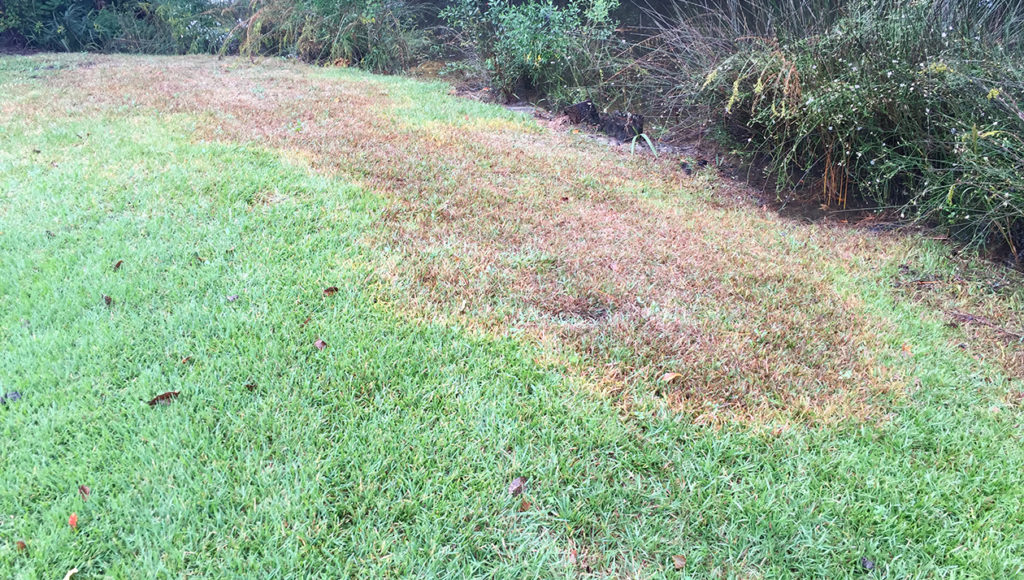
Take-All Root Rot (TAR)
Take-All Root Rot is a pervasive Texas lawn fungus that damages the root system of grasses like St. Augustine and Bermuda. Emerging in early summer, it starts when the grass begins to show yellowing patches that eventually turn brown and die, potentially affecting the entire lawn. This root rot disease thrives when St. Augustine grasses are stressed by drought, soil compaction, or pests. Proper identification is crucial, as symptoms can mimic other lawn diseases. Effective control involves improving soil quality and ensuring adequate drainage. Consulting your local lawn care professional, Higher Ground, can also provide targeted solutions for this challenging issue.
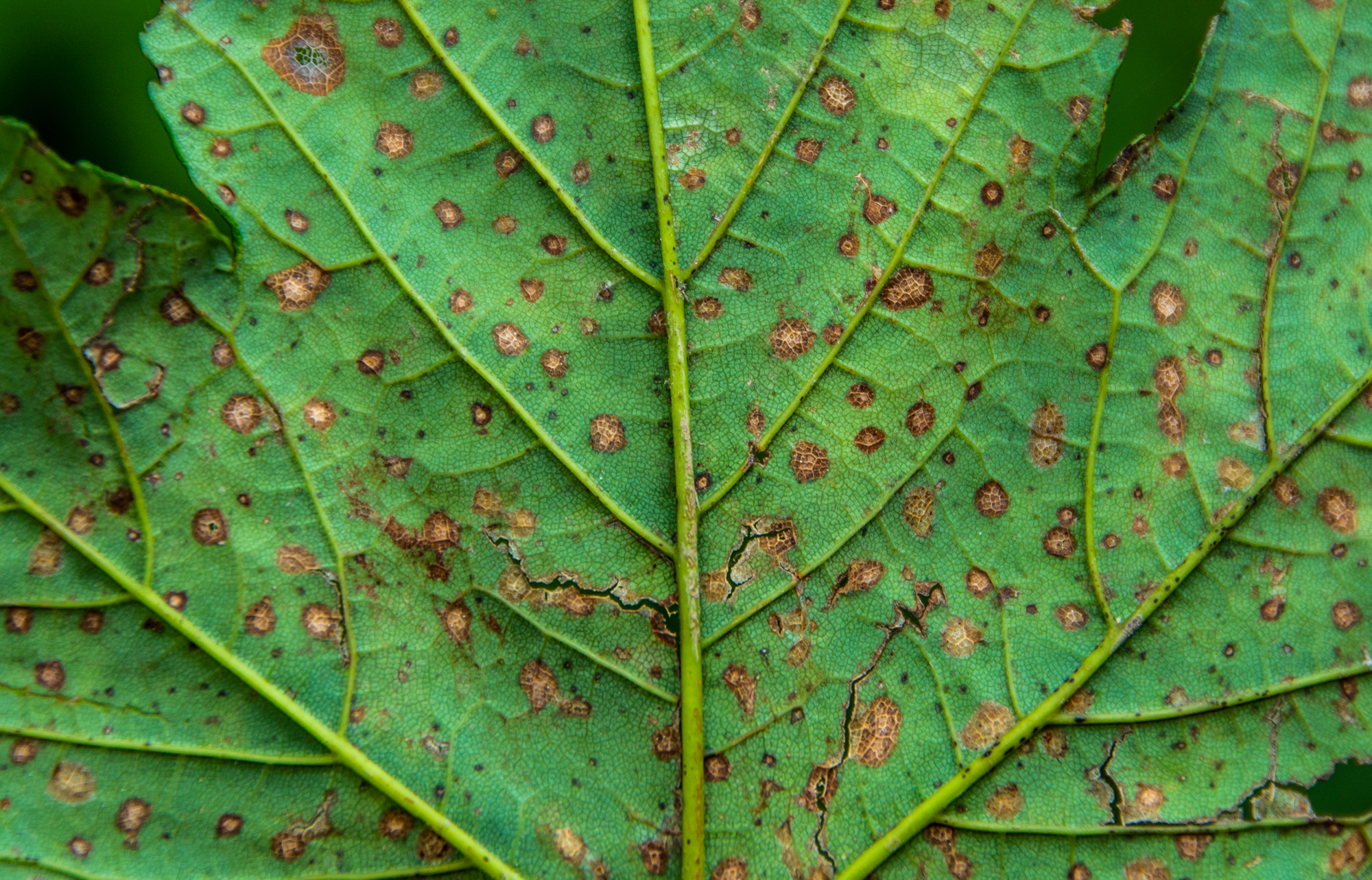
Gray Leaf Spot
Gray Leaf Spot is a significant turf disease in Texas, thriving in high humidity and often mistaken for other turfgrass issues. It starts as small spots on grass blades that expand, turning leaves grayish-brown and impacting your lawn’s appearance. Monitoring during these times is essential, and it is most active in late summer and early fall. Regular organic fungicide treatments are crucial for managing Gray Leaf Spots and maintaining healthy grass. Leaf spot diseases vary in color, including yellow-green, brown-black, and orange-red, and can affect almost all trees and shrubs. Effective control requires fungicide treatment to ensure plants remain healthy and vibrant.

Brown Patch
Brown Patch is a common lawn disease in Texas, thriving in warm, humid months. This fungal disease attacks grass blades, creating large, circular patches of dead grass and yellow spots. It affects cool-season grasses like Ryegrass and Tall Fescue and warm-season grasses like Zoysia, St. Augustine, and Bermuda. Brown Patch disease flourishes in moisture-rich environments and can occur year-round depending on turfgrass type. At Higher Ground, we recommend monitoring moisture levels and adjusting watering and feeding practices. For persistent issues, consult our professional team for specialized care to keep your lawn healthy and free from Brown Patch.
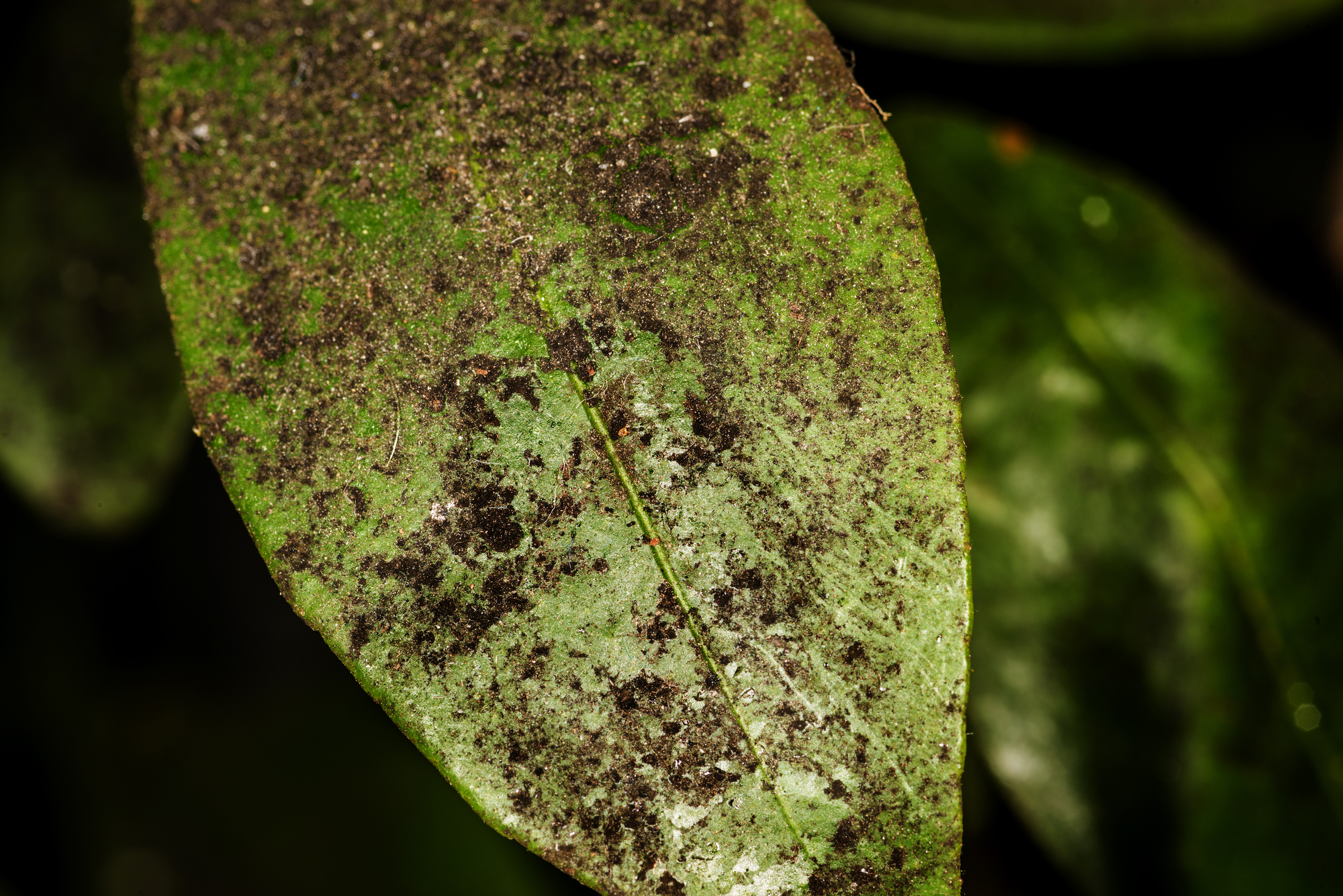
Black Sooty Mold (Capnodium)
Black Sooty Mold, scientifically known as Capnodium, is a lawn disease that appears as a black, soot-like coating on plant surfaces. Although often not life-threatening, it signals underlying issues needing attention. This fungus impedes nutrient uptake by covering plant surfaces, leading to nutrient deficiency, decay, and stunted growth as the disease progresses. It thrives on honeydew, a sticky substance excreted by lawn pests feeding on plant sap. Proper organic fungus treatment involves addressing the underlying pest issue and removing the mold to restore plant health. As temperatures rise, contacting Higher Ground ensures effective management before escalation.

Dollar Spot
Dollar Spot, recognized by its small, silver-dollar-sized circles, often starts modestly but can rapidly spread across the lawn if left untreated. This lawn disease primarily targets lawns in Texas suffering from a nutrient deficiency or insufficient moisture, forming large patches of damaged grass. At Higher Ground, we stress the importance of consistent lawn feeding and watering techniques to fend off this common fungal disease, ensuring your lawn remains healthy and vibrant.
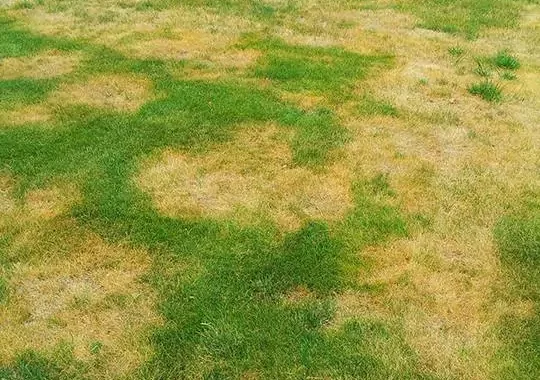
Summer Patch
Summer Patch poses a significant threat in the Texas heat. It is notorious for its ability to kill grass by attacking the root system. It presents as irregular brown patches that expand rapidly, especially in areas exposed to full sunlight. To protect your turf, we recommend deep, infrequent watering practices to encourage strong roots and monitoring for early stages of the disease in warm-season grasses like centipede grass and Augustine grass. Identifying and managing this lawn disease early is crucial for maintaining a healthy lawn.
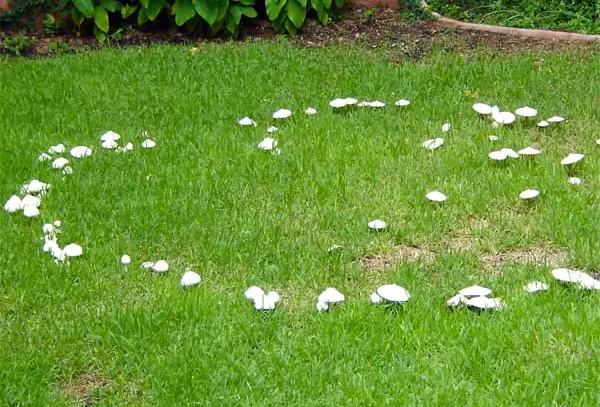
Fairy Ring
Despite its enchanting name, Fairy Ring is a severe fungal disease that creates dark green or brown rings in your lawn. These rings inhibit water and nutrient absorption by the grass within the circle, leading to uneven lawn health. At Higher Ground, we manage this disease by breaking up the soil and applying organic fungicide treatments. Proper treatment helps ensure your lawn remains lush and evenly nourished, even in Texas’s challenging climate.
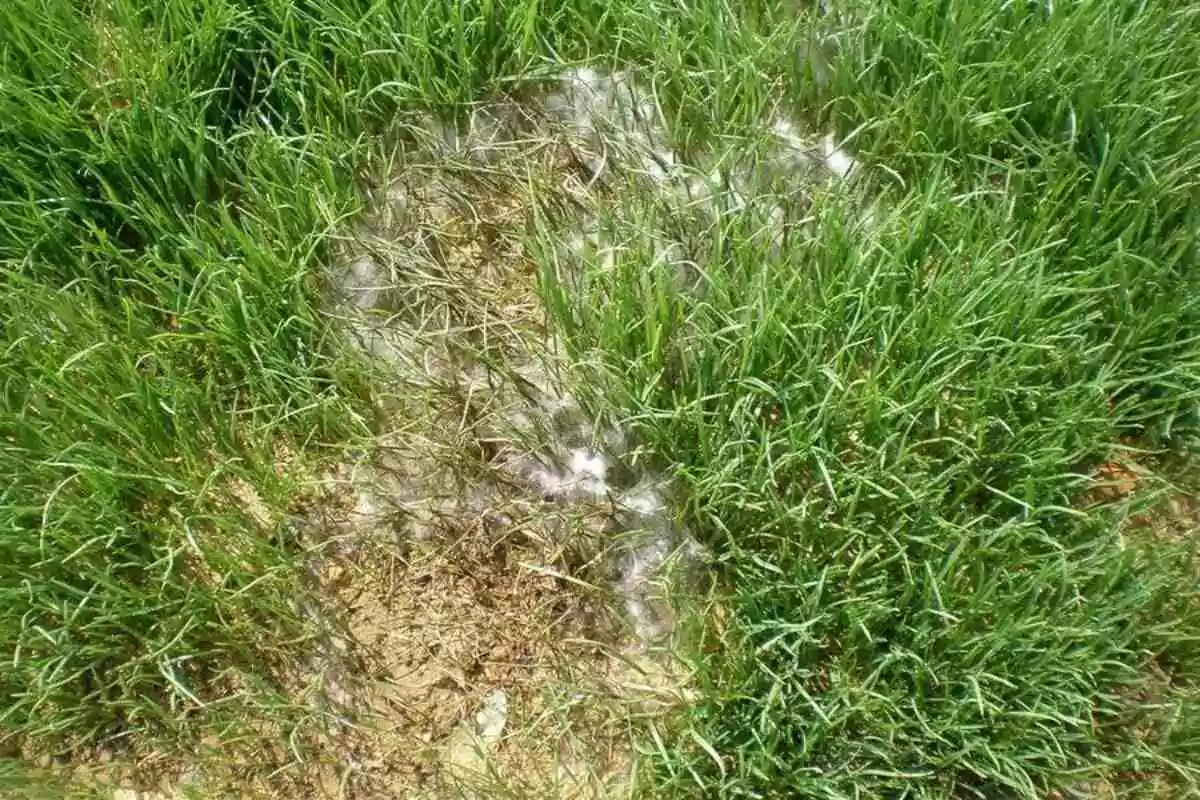
Pythium Blight
Pythium Blight is a fast-acting fungus that can turn your lawn into a greasy, dark mess, particularly under Texas’s warm, humid conditions. This aggressive lawn disease produces fluffy white mycelium on the grass blades, resembling cotton candy. Preventative measures include improving air circulation and applying fungicides before the high humidity seasons begin, helping to keep your lawn healthy and free from this destructive fungus.

Red Thread
Red Thread manifests as reddish threads on the leaf blades, typically weakening the grass rather than killing it outright. This disease thrives in Texas’s moist conditions and poor nutritional soil. Ensuring your lawn is well-fed and avoiding excess moisture are critical strategies for preventing Red Thread and maintaining the health and resilience of your warm-season grasses.
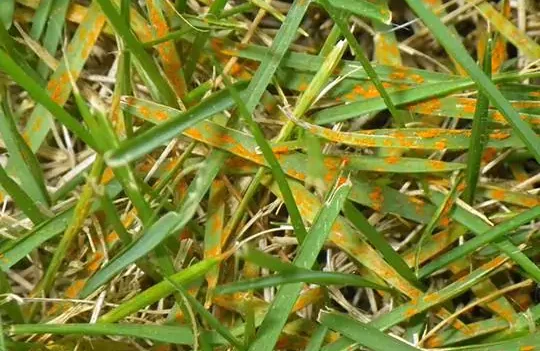
Rust Diseases
Rust diseases appear as yellow to reddish-brown speckles on the leaf blades, resembling rust on metal. These diseases are more common during Texas’s cool, wet spring or fall days when temperatures drop. Maintaining good air circulation and reducing leaf wetness through proper mowing and watering can help manage rust outbreaks. By addressing these conditions, we at Higher Ground help keep your lawn free from many fungal diseases and ensure its overall health.
Preventative Measures and Lawn Care Tips
A proactive approach is paramount in preventing lawn diseases and ensuring the health of your entire lawn. Regularly monitoring your lawn’s condition is the first step in catching issues early before they turn brown and cause extensive damage. Employing correct watering practices, such as deep, infrequent watering to promote strong root systems, is crucial. Ensuring your lawn receives timely organic fertilization will help maintain its resilience against stress and disease.
We also recommend aerating your lawn. Aeration helps the soil breathe better, reducing the compaction that can lead to fungal infections. Proper aeration improves water penetration, nutrient uptake, and root development, all essential for a healthy lawn. Regularly removing excess thatch can also prevent the buildup of moisture that many fungal diseases thrive on.
Keep Your Texas Lawn Vibrant and Healthy
Understanding and managing yard fungi and diseases are critical for maintaining a vibrant and healthy lawn in Texas. With the proper knowledge and support from professionals like us at Higher Ground, you can keep your lawn looking its best year-round. Implementing proactive measures such as regular monitoring, proper watering, timely fertilization, and aeration can prevent common lawn diseases and ensure your grass remains lush and green.
If you’re facing persistent lawn diseases or want to avoid potential issues, don’t hesitate to contact us. Our team is ready to help you achieve a lush, disease-free lawn that you’ll be proud to show off. Contact Higher Ground today for expert advice and tailored lawn care solutions.
Ready to get started?
